Het Grootslag

We are here in front of steam pumping station and National Monument Grootslag II, which was in operation between 1907 and 1974. It first pumped into the Zuiderzee and from 1932 into the IJsselmeer. That year the Afsluitdijk was completed, the 32 kilometer long sea wall cum highway between North Holland and Friesland. Thus the Zuiderzee was divided into the Wadden Sea and the IJsselmeer, which turned sour within a few years.
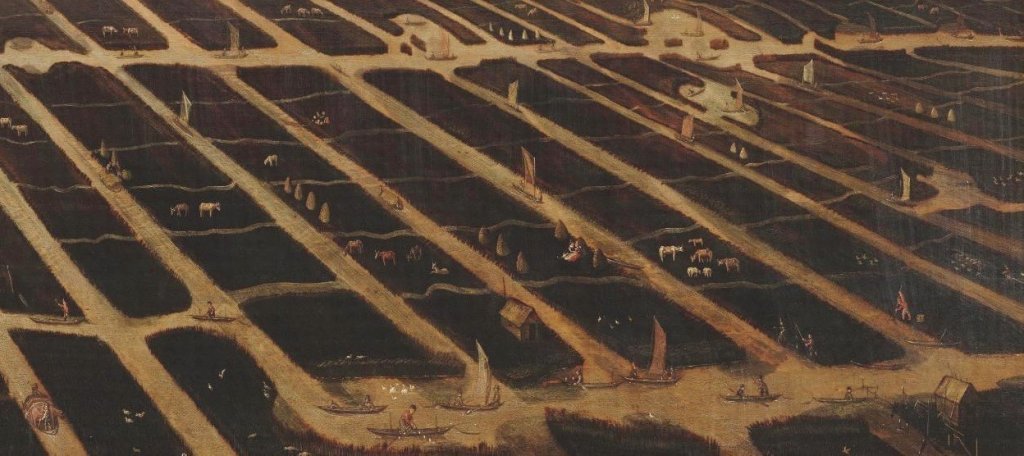
The pumping station owes its name to the polder Het Grootslag, a partnership dating back to the year 1423. The towns of Enkhuizen and Grootebroek and surrounding villages then joined forces against flooding. They built dikes and improved drainage. The polder stretches from Andijk in the north to Broekerhaven in the south. It was a water-rich area until the last century. Farmers had bits of land here and there. To get there, they took the barge.
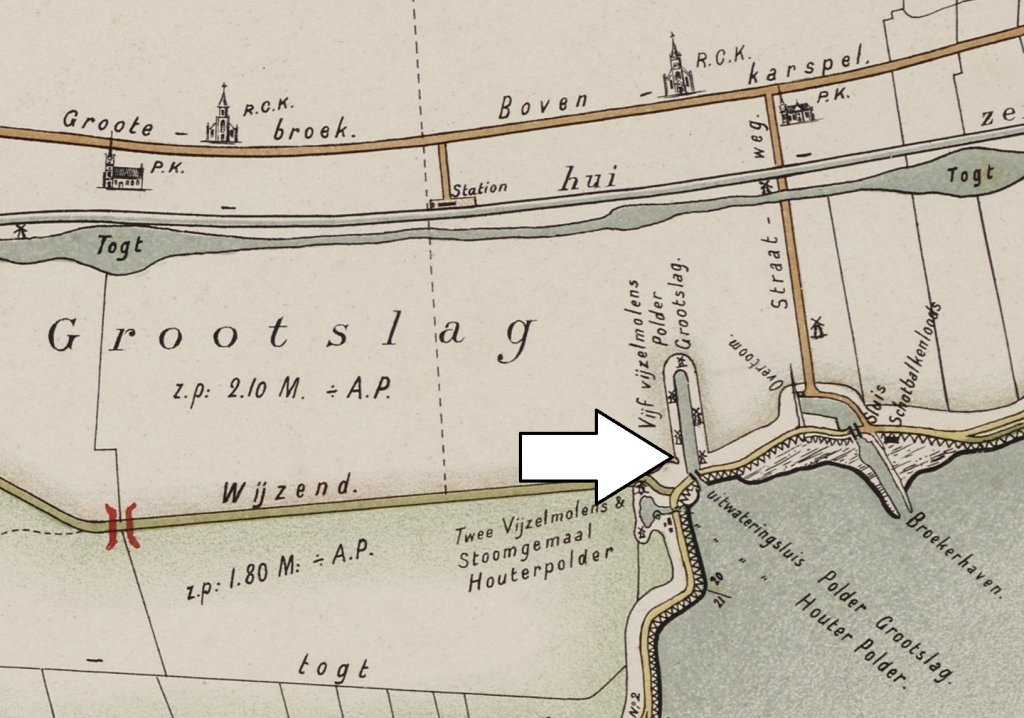
Like everywhere else in West Friesland, the drainage of Het Grootslag was increasingly becoming a problem. Due to subsidence it became increasingly difficult to discharge the water through the sea locks. The polder board decided in 1452 to build two windmills near Enkhuizen. Eventually mills were built at three places along the Omringdijk as a link between polder and sluice: at Andijk, Enkhuizen and here at the Zuiderdijk. They ground the water up into a whirlpool. This came out at a sluice in the dike.
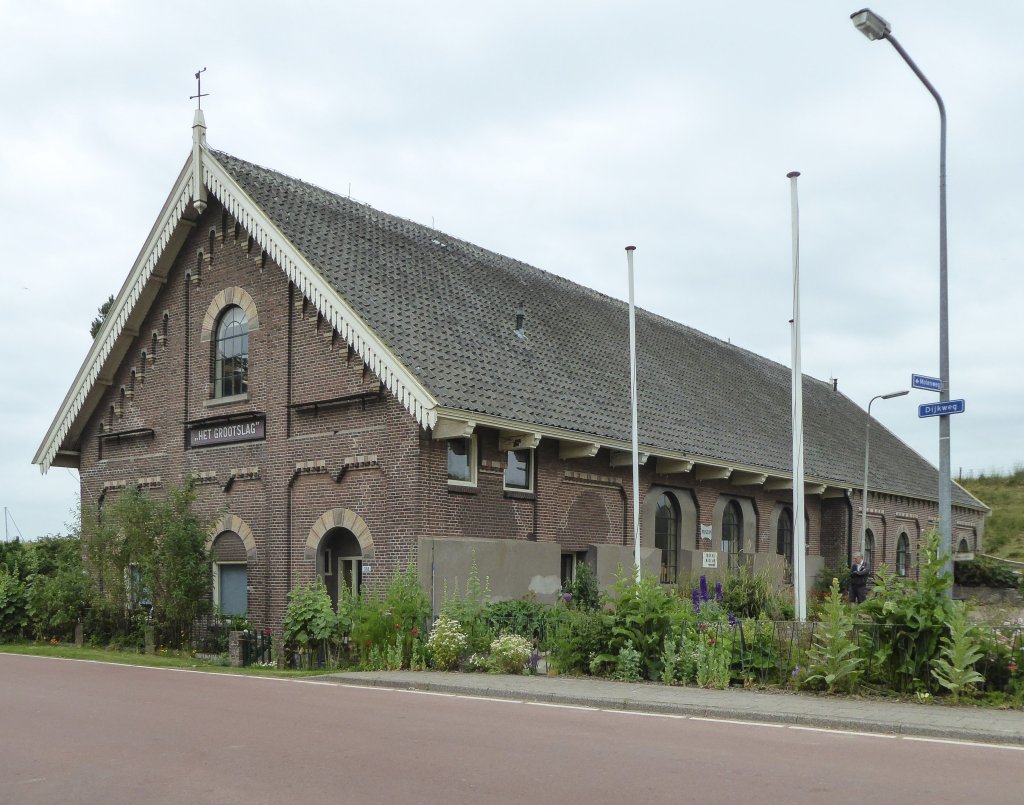
The disadvantage of mills was their dependence on the wind. If it rained heavily for a week with no wind, they needed a few days to bring the ditches back to the desired level. In 1863 Het Grootslag decided to build a steam pumping station at Andijk. It was so successful that in 1871 a larger pumping station, Grootslag I (photo), was commissioned near the same village. The mills remained in operation, although a few were demolished near Andijk and Enkhuizen. The five at Zuiderdijk remained standing for the time being.
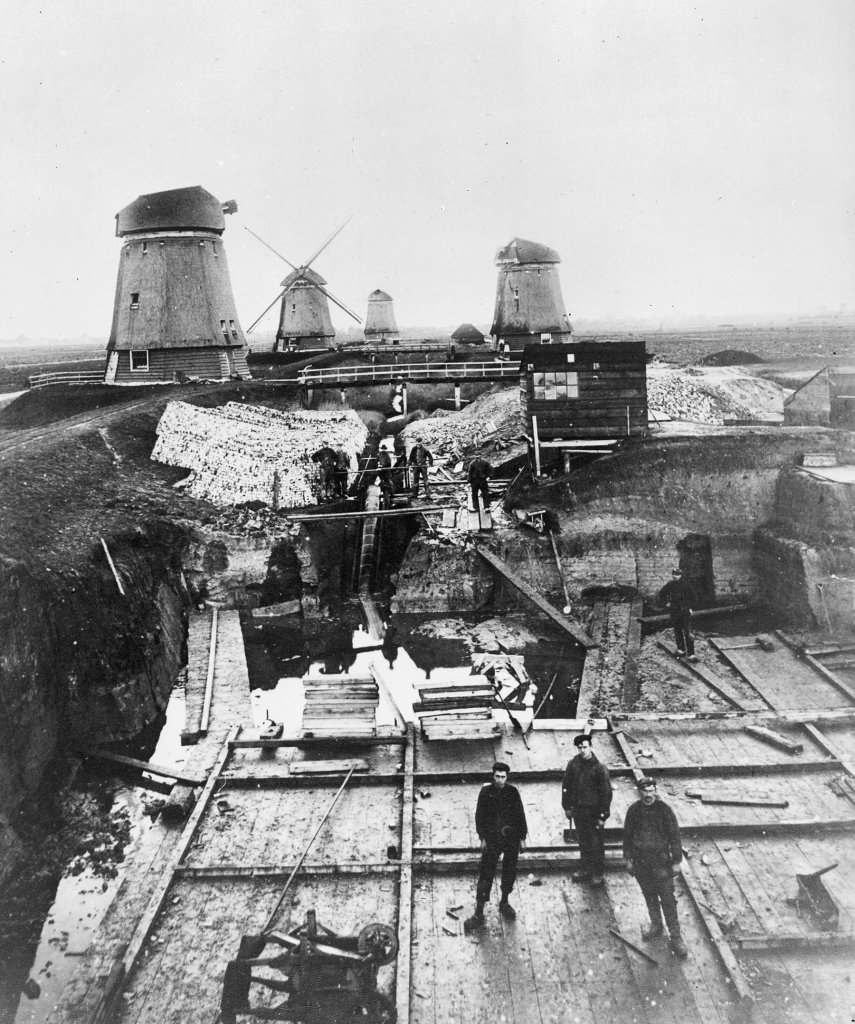
In 1906 Het Grootslag was ready to give up wind drainage and put everything on steam. A year later it built a new steam pumping station here on the Zuiderdijk with the appropriate name of Grootslag II. The nine mills that had not yet been demolished went under the sledge hammer. Thus disappeared the mills on the Zuiderdijk. In the photo they are still standing, partly dismantled, behind the construction pit of the pumping station.
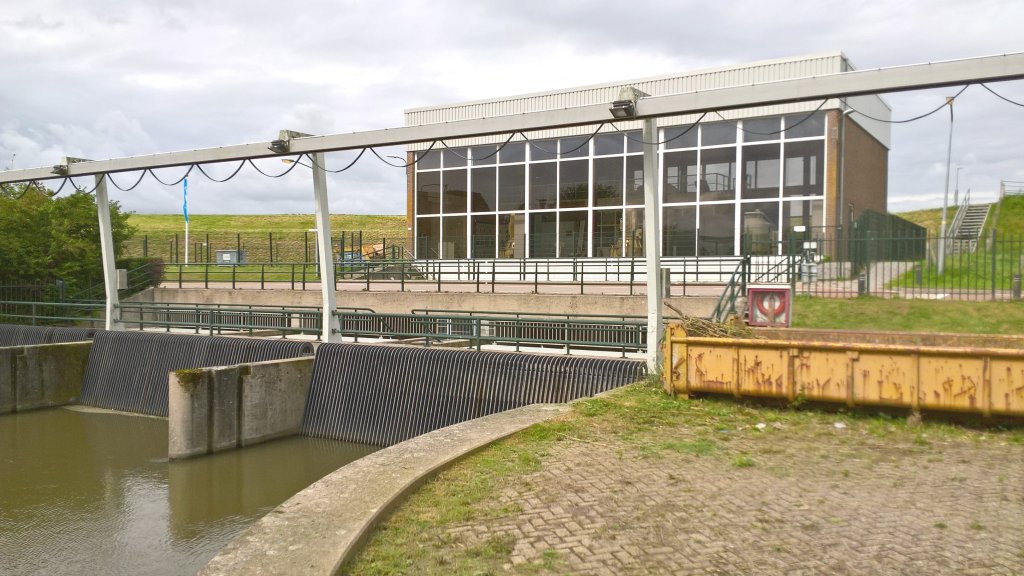
Just before the war, an electric motor was installed in Grootslag II. The steam engine remained in use as back-up drive. In 1974 Grootslag I and II were replaced by a more powerful pumping station, Het Grootslag in Andijk (photo). The reason was the land consolidation, in which the numerous patches of farmland were combined into large, productive fields. The polder changed face. Many ditches were filled in and with the water the traditional farm barge disappeared.